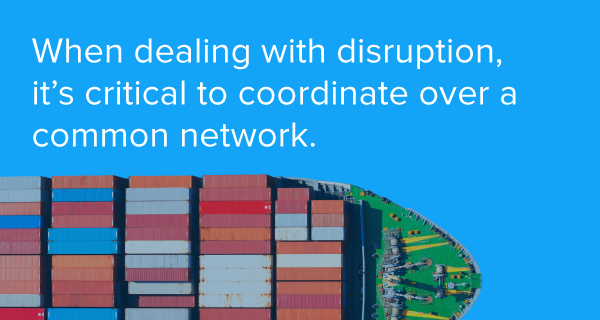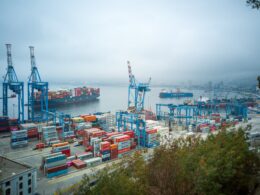Greg Kefer, VP marketing, Infor
This is not breaking news. At most companies, supply chains are vast, complex, and still relatively brittle when exposed to disruptions that are nearly impossible to predict or plan for. This has been a long-running and vexing challenge that’s only gotten harder as operations expand and shift around the world.
Simon Ellis at IDC Manufacturing Insights wrote five years ago: “As we move into 2013, IDC Manufacturing Insights believes that supply chain resiliency will become the top priority for companies looking to master the massive multidimensionality of their supply chains.”
The digital supply chain transformation mission is embraced by many on a path to agile supply chains, but there is a long way to go. Technology is making its way into pockets but non-digital, disconnected activities and heroics are frequently required to keep factories running and customers satisfied.
As we approach the third decade of the 21st century, supply chain practitioners are facing intense pressure to innovate. Amazon is putting the industry on notice and raising the performance bar for everyone – not just the brick-and-mortar retailers. If we can get an Amazon Prime order in 24 hours, why can’t we expect the same from our widget suppliers, who have known about our production plans for months?
Supply chain agility comes in many forms
We can ask a simple question and get a lot of different answers with regards to what agility is. Answers such as volatile demand, evolving sourcing strategies, new market expansion, the accelerating pace of business, lean manufacturing, omnichannel retail, and disruption response would all get votes. If you take a step back, most of the answers would likely fall under the umbrella of dealing with the unexpected.
Things are going to happen out there, somewhere on the planet, that are going to make it harder to keep an assembly line running as planned. This is why a focus on supply chain execution is so important. There are simply too many potential disruption scenarios to plan your way out of.
Agile execution, based on an accurate, always-on picture across the entire supply chain, is a critical first step. While it’s hard to plan or predict a disruption, the company that assesses the landscape and determines their options quickly, before taking corrective action, will be better off. This is one of the reasons supply chain visibility technology remains high on company wish lists.
Dealing with the unexpected
Black swan events are frequently highlighted as examples where a lack of agility can destroy the best made plans. Whether it’s a major event like the 2011 Japan earthquake and tsunami, or a small regional event like two container ships bumping into each other in a remote port in Malaysia, the impact to a company’s bottom line can be dramatic.
As most companies arrived at their offices on Monday morning, March 14, 2011, few had a clear view of what had just happened to their supply chains in Japan. While many set up war rooms at headquarters to assess the situation, some companies had already used their supply chain visibility system to get a clear picture of what inventory had been disrupted and were already coordinating with partners to re-route, re-source, and strategically expedite shipments where necessary to keep their plants running. Thanks to supply chain visibility, Caterpillar reported that their supply chain was unaffected by the disaster while many other very large companies were punished on Wall St. for the balance of 2011 because of their poor supply chain response to the event.
Conversely, even relatively small incidents can be a potential disaster for a company. In 2014, two container ships had a collision in Port Klang, Malaysia. Electrolux was told by the carrier that they had nine containers that would be stuck until the ship was repaired. But thanks to their supply chain visibility technology, they soon realized it wasn’t nine. Because of load sharing alliances, Electrolux had 119 containers on the vessel, which represented 50% of the inventory that Electrolux was sending to Brazil time for the peak holiday season. The readily available inventory information about the stuck merchandise allowed the appliance company to respond quickly and not completely miss the holiday season in Brazil. Electrolux estimated it saved them $50 to $60 million by having the big picture, real time view into their logistics network.
Networks drive digital transformation
Supply chain visibility is a core pillar in shedding light across the globe and providing the information necessary to make smart decisions and plans. But information is at the root of any technology solution, especially one that’s based on smart sensing and execution. Cloud-based information networks that connect companies and their partner communities to a core set of information put everyone on the same information page, so all see and act based on the same things.
When dealing with a disruption of any kind, it’s critical to make sure key partners are executing smartly and efficiently. The only way this can happen is if all are coordinating over a common network, based on the same information. Networks break down silos.
Digital technology is changing everything and with these changes comes a reimagining of the supply chain, from the systems businesses use to communicate and interact, to the strategies they deploy to move goods around the world. Digitalization gives rise to new business models, in which real-time connectivity, greater visibility, reactivity, and anticipation become the underlying characteristics of our supply chains.
The kind of change required to achieve full agility isn’t easy, and transformation doesn’t happen overnight. We have made a lot of progress since that 2013 IDC report, and the constant need to sense and respond to change quickly and efficiently is not going away. Failure is not an option, and one thing we do know is the future of supply chain is not analog.













